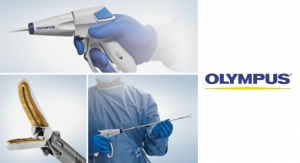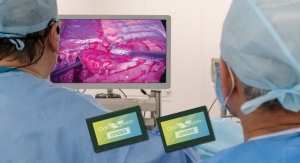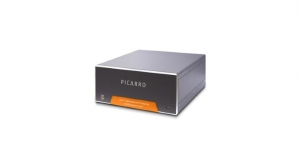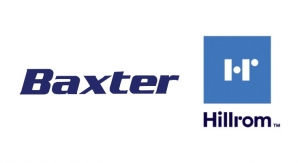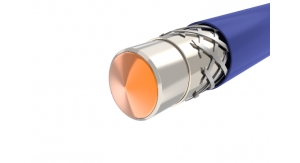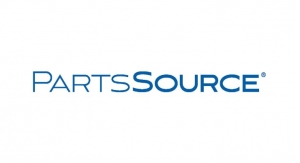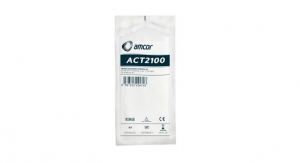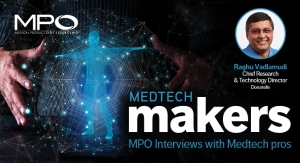Mark Crawford, Contributing Writer07.26.18
Data is everything these days. Increasingly, corporate planning is data-driven—the better the data, the better the decision-making.
Many manufacturing industries conduct annual benchmarking surveys, carried out by industry associations or consulting firms that track key metrics measuring industry performance. The data is used by individual companies to develop strategic and operational goals and improve overall performance. Companies that utilize this data gain a competitive advantage by understanding their markets at a deeper level.
The medical device supply chain is one of the few large industries that does not carry out an annual benchmarking survey for key performance indicators. To remedy this, Medical Product Outsourcing (MPO) and the Medical Device Manufacturers Exchange (mdmX), an industry association representing about 70 medical device supply chain companies and contract manufacturers, collaborated to create and implement the first-ever benchmarking survey for the medical device supply chain.
The survey is an opportunity to provide the medical device supply chain with key financial and operational statistics on the industry’s condition and growth. Survey questions (see sidebar) inquired about company size and revenue growth, profitability ratios, capital spending, manufacturing footprint, and operational metrics. The goal is to seek input from as many suppliers as possible to broaden the response and determine meaningful results.
“MPO and mdmX both recognize the survey as an opportunity to establish a common viewpoint that can be used by all companies in the industry for analysis, planning, and decision-making,” said Sean Fenske, editor-in-chief for MPO.
For example, companies are always eager to know if they are as fast as their competitors. They also wonder if they are as profitable on a percentage basis as other players in their industry. Both of these questions are addressed by the survey. “If the results cause company leaders to take a harder look at their markets, customers, pricing, and delivery, then the survey has done its job,” added Tony Freeman, a strategic advisor to the precision manufacturing and specialty materials industries and executive director of mdmX.
Another example is operational metrics and data. Basic metrics such as on-time delivery percentages, or whether requests for cost-downs from customers are common or unusual, are valuable to know when deciding how to adapt to changing market dynamics. Every year, medical device manufacturers must make decisions about how to deploy staff and capital—understanding the dynamics of their industry helps managers make more informed decisions.
“I think this data will start to clear away some of the fog,” said Freeman. “For example, knowing average operating income helps managers plan for the right balance of projects, pricing, and overhead. Knowing the percentage of respondents investing in new capital equipment can reflect the strength of the market. If other companies are also being hit with extended payment terms, management has a chance to consider its own strategy in a less isolated way. Having knowledge that on-time delivery is less than perfect in the industry may reveal sales opportunities to companies who maintain excellent on-time delivery stats.”
“Our goal,” added Fenske, “is to have this survey become a trusted annual feature in the magazine, with data that truly provides value to the industry.”
Survey Results and Discussion
As often happens with new surveys, not enough companies responded to create a statistically valid data base. Therefore, meaningful conclusions cannot be drawn from the data that was collected. That said, the data does reveal some interesting trends. For example, revenue growth in 2017 averaged 10.6 percent with a median value of 10 percent. Companies over $100 million averaged 7 percent growth, $35-$100 million grew 9 percent, and under $35 million averaged 15 percent growth. These numbers reflect solid expansion across the industry, especially for smaller to mid-sized companies. The standard deviation was 5.7 percent.
“There was some skew to the revenue growth numbers,” said Freeman. “Companies with revenue under $35 million averaged 15 percent growth. That’s higher than I would have expected. Companies with sales of $35 million had average revenue increases between 7 percent and 9 percent over 2016, which sounds about right based on my experience.”
Freeman feels that supply chain companies continue to outpace the general medical device market because of the increasing popularity of outsourcing. Why did the small companies grow faster than the bigger supply chain companies? His guess is the “closer to zero” effect. For example, consider a $20 million company that has an good year and grows to $22 million. The growth of $2 million represents a 10 percent increase in sales. Now suppose a $100 million company grows to $102 million. The dollar amount of growth is the same, but the firm’s growth is only 2 percent. Because the small firm has such a small revenue basis, even a modest change has a larger percentage effect. “The closer you get to zero, the more profound the effect will be on a percentage basis,” said Freeman. “I was expecting that we would see a higher percentage of revenue growth in small companies due to this effect and that does indeed seem to be the case.”
Gross margin percentage averaged 29.9 percent with a median value of 28.5 percent—about what Freeman expected. The big companies averaged 27 percent; the $35-$100 million companies averaged 28 percent. Small companies averaged 38 percent, which Freeman attributes to lower manufacturing overhead and high absorption in a busy year. “The small companies also often have unique specialties that keep them in business,” said Freeman. “Those may be small niches, but they often have high gross margins.”
Operating income percentages varied widely. The average was 12.7 percent with a median of 12 percent. Standard deviation was 7 percent. The big companies averaged 11 percent, while the $35-$100-million companies averaged 16 percent. Small companies averaged only 8 percent. Why the low number for the smaller companies? Freeman guessed that owners are managing for taxes. “Their salaries and benefits tend to outsize on a percentage basis compared to larger companies so that’s a possible, but not solid, explanation,” he said. “A small sample size could actually be the biggest culprit for the low 8 percent figure.”
Other highlights from the survey include:
Freeman was surprised by the frequency of formal requests for extended payment terms, which reflects a transference of risk to the supply chain. Vendors are being asked to serve as a bank for the OEMs to a greater extent than they have in the past. That transference of risk demonstrates a greater reliance on the supply chain, as well as a low cost of financing approach by the OEMs. It demonstrates the evolving role between OEM and vendor.
“This can be both positive and negative for supply chain companies, though I think the immediate response will be negative,” said Freeman. “What is striking is that an overwhelming number of respondents noted they were formally approached with requests for extended payment terms. This indicates an industry-wide shift, not just a few OEMs asking for extensions.”
For Freeman, the most valuable part of the survey was understanding revenue growth and profitability ratios as they drive valuation. The survey confirms the medical device supply chain is a profitable area of manufacturing. Compared to commodity manufacturers (construction products, automotive, consumer products, etc.), which have gross margins in the teens and operating income in the single digits, the data revealed that medical device suppliers are almost twice as profitable per dollar of revenue. “It also establishes a peg for comparison between medical device suppliers,” said Freeman. “If suppliers are sharply off those numbers, high or low, they should be asking why.”
Although the medical device industry is reluctant to share private and/or sensitive data, participation in the survey is completely anonymous. MPO and mdmX have no knowledge of which companies responded to the survey. All responses are treated as strictly confidential. At no time does the survey require a name or company name, nor will that information ever be recorded. All results are consolidated by the survey software. As a further guarantee of anonymity and accuracy, the survey results are transmitted to an independent accounting firm to verify results and ensure only summary data is made available to MPO for publication.
Although the survey’s numbers are not as solid as Freeman had hoped, they are still quite useful for benchmarking and identifying trends. Overall, the survey was a good first effort for trying to establish a brand-new process that requires some trust. “It’s a new concept to the industry,” said Freeman. “Next year, we hope to at least double the number of respondents so we can report meaningful, statistically valid findings.”
Once medical device supply chain companies see this year’s results, Freeman is hopeful that more companies will understand the value of participating in the 2019 survey. “I think forward-looking managers realize that to get something they have to give something,” said Freeman. “The greater the number of companies that respond, the better the results will be for the industry as a whole.”
Freeman is already looking forward to next year’s survey. He plans to expand the survey to include more questions on operating metrics like defects/PPM (parts per million) or net operating profit/employee. “There is a real gap in understanding the range in operational results,” he stressed. “Many profitable companies are quietly underperforming because they do not know what sort of operational performance they can/should be targeting. Others may over-invest in capacity to maintain high productivity that may or may not translate to economic value. It is hard to know how much to invest when there is no clear definition of what constitutes good, bad, or average.”
The results of the survey will be shared with the medical device supply chain, regardless as to whether individual companies participated or not. This will allow companies to gain a true sense of the value of the industry-wide information. [Note: Click here to view the survey results at mdmX’s website.]
“Better decision making is what we hope will come out of the survey data,” said Freeman. “We’ll get the best data if we get broad participation. Further, by establishing the survey as an annual gold standard for objective information about supply chain companies, well-informed decisions on future direction, spending, and compensation can be made on firmer ground than they are today.”
Mark Crawford is a full-time freelance business and marketing/communications writer based in Madison, Wis. His clients range from startups to global manufacturing leaders. He also writes a variety of feature articles for regional and national publications and is the author of five books.
Many manufacturing industries conduct annual benchmarking surveys, carried out by industry associations or consulting firms that track key metrics measuring industry performance. The data is used by individual companies to develop strategic and operational goals and improve overall performance. Companies that utilize this data gain a competitive advantage by understanding their markets at a deeper level.
The medical device supply chain is one of the few large industries that does not carry out an annual benchmarking survey for key performance indicators. To remedy this, Medical Product Outsourcing (MPO) and the Medical Device Manufacturers Exchange (mdmX), an industry association representing about 70 medical device supply chain companies and contract manufacturers, collaborated to create and implement the first-ever benchmarking survey for the medical device supply chain.
The survey is an opportunity to provide the medical device supply chain with key financial and operational statistics on the industry’s condition and growth. Survey questions (see sidebar) inquired about company size and revenue growth, profitability ratios, capital spending, manufacturing footprint, and operational metrics. The goal is to seek input from as many suppliers as possible to broaden the response and determine meaningful results.
“MPO and mdmX both recognize the survey as an opportunity to establish a common viewpoint that can be used by all companies in the industry for analysis, planning, and decision-making,” said Sean Fenske, editor-in-chief for MPO.
|
As previously noted, the survey has been left open should additional companies be interested in participating and to expand upon the final results. Should you be interested in completing the survey for your company’s 2017 performance, you can do so at http://bit.ly/mpo180751. The survey questions for this initial survey are:
|
Another example is operational metrics and data. Basic metrics such as on-time delivery percentages, or whether requests for cost-downs from customers are common or unusual, are valuable to know when deciding how to adapt to changing market dynamics. Every year, medical device manufacturers must make decisions about how to deploy staff and capital—understanding the dynamics of their industry helps managers make more informed decisions.
“I think this data will start to clear away some of the fog,” said Freeman. “For example, knowing average operating income helps managers plan for the right balance of projects, pricing, and overhead. Knowing the percentage of respondents investing in new capital equipment can reflect the strength of the market. If other companies are also being hit with extended payment terms, management has a chance to consider its own strategy in a less isolated way. Having knowledge that on-time delivery is less than perfect in the industry may reveal sales opportunities to companies who maintain excellent on-time delivery stats.”
“Our goal,” added Fenske, “is to have this survey become a trusted annual feature in the magazine, with data that truly provides value to the industry.”
Survey Results and Discussion
As often happens with new surveys, not enough companies responded to create a statistically valid data base. Therefore, meaningful conclusions cannot be drawn from the data that was collected. That said, the data does reveal some interesting trends. For example, revenue growth in 2017 averaged 10.6 percent with a median value of 10 percent. Companies over $100 million averaged 7 percent growth, $35-$100 million grew 9 percent, and under $35 million averaged 15 percent growth. These numbers reflect solid expansion across the industry, especially for smaller to mid-sized companies. The standard deviation was 5.7 percent.
“There was some skew to the revenue growth numbers,” said Freeman. “Companies with revenue under $35 million averaged 15 percent growth. That’s higher than I would have expected. Companies with sales of $35 million had average revenue increases between 7 percent and 9 percent over 2016, which sounds about right based on my experience.”
Freeman feels that supply chain companies continue to outpace the general medical device market because of the increasing popularity of outsourcing. Why did the small companies grow faster than the bigger supply chain companies? His guess is the “closer to zero” effect. For example, consider a $20 million company that has an good year and grows to $22 million. The growth of $2 million represents a 10 percent increase in sales. Now suppose a $100 million company grows to $102 million. The dollar amount of growth is the same, but the firm’s growth is only 2 percent. Because the small firm has such a small revenue basis, even a modest change has a larger percentage effect. “The closer you get to zero, the more profound the effect will be on a percentage basis,” said Freeman. “I was expecting that we would see a higher percentage of revenue growth in small companies due to this effect and that does indeed seem to be the case.”
Gross margin percentage averaged 29.9 percent with a median value of 28.5 percent—about what Freeman expected. The big companies averaged 27 percent; the $35-$100 million companies averaged 28 percent. Small companies averaged 38 percent, which Freeman attributes to lower manufacturing overhead and high absorption in a busy year. “The small companies also often have unique specialties that keep them in business,” said Freeman. “Those may be small niches, but they often have high gross margins.”
Operating income percentages varied widely. The average was 12.7 percent with a median of 12 percent. Standard deviation was 7 percent. The big companies averaged 11 percent, while the $35-$100-million companies averaged 16 percent. Small companies averaged only 8 percent. Why the low number for the smaller companies? Freeman guessed that owners are managing for taxes. “Their salaries and benefits tend to outsize on a percentage basis compared to larger companies so that’s a possible, but not solid, explanation,” he said. “A small sample size could actually be the biggest culprit for the low 8 percent figure.”
Other highlights from the survey include:
- Capital spending: Sixty-five percent of the respondents increased capital expenditures in 2017 compared to 2016, 29 percent did not, and 6 percent did not reply. The nearly two-thirds figure for increased capital expenditures reflects management’s confidence in future growth.
- Requests for cost-downs: Eighty-two percent of the survey participants indicated they encountered formal requests for extended payment terms from their key customers in 2017. “It is clear that OEMs are looking for cost-downs,” said Freeman. “Whether they are getting them is another question. If they aren’t, then power has sharply shifted to the supply chain.”
- Average number of facilities: Large companies averaged 4.5 facilities, followed by mid-sized companies with 2.6 and small companies with 1.25. Average square footage per manufacturing facility is around 50,000 square feet, with a median around 56,000 square feet. The average number of employees per facility was 115.
- FDA-registered: Nearly all respondents indicated they are FDA-registered in at least some facilities. All respondents showed ISO 13485 registration for at least one of their facilities. Sixty-five percent of respondents only manufacture in the United States, Canada, Europe, or Japan. The remaining third provide some manufacturing outside these countries. “The sample is too small to make generalizations about who goes overseas,” said Freeman. “This will be interesting to look at in more depth when we have more respondents.”
- On-time delivery: Eighty-eight percent of respondents indicated they track on-time delivery vs. a customer scorecard. Seventy-six percent revealed they are within 5 percent of customer targets. Why are so many companies not in compliance with such a generous margin of error? Challenges meeting schedules? Supply chain problems? Material lead times? Frequent change orders? “This is an interesting question for experts who are more operationally focused than I am,” said Freeman.
Freeman was surprised by the frequency of formal requests for extended payment terms, which reflects a transference of risk to the supply chain. Vendors are being asked to serve as a bank for the OEMs to a greater extent than they have in the past. That transference of risk demonstrates a greater reliance on the supply chain, as well as a low cost of financing approach by the OEMs. It demonstrates the evolving role between OEM and vendor.
“This can be both positive and negative for supply chain companies, though I think the immediate response will be negative,” said Freeman. “What is striking is that an overwhelming number of respondents noted they were formally approached with requests for extended payment terms. This indicates an industry-wide shift, not just a few OEMs asking for extensions.”
For Freeman, the most valuable part of the survey was understanding revenue growth and profitability ratios as they drive valuation. The survey confirms the medical device supply chain is a profitable area of manufacturing. Compared to commodity manufacturers (construction products, automotive, consumer products, etc.), which have gross margins in the teens and operating income in the single digits, the data revealed that medical device suppliers are almost twice as profitable per dollar of revenue. “It also establishes a peg for comparison between medical device suppliers,” said Freeman. “If suppliers are sharply off those numbers, high or low, they should be asking why.”
Although the medical device industry is reluctant to share private and/or sensitive data, participation in the survey is completely anonymous. MPO and mdmX have no knowledge of which companies responded to the survey. All responses are treated as strictly confidential. At no time does the survey require a name or company name, nor will that information ever be recorded. All results are consolidated by the survey software. As a further guarantee of anonymity and accuracy, the survey results are transmitted to an independent accounting firm to verify results and ensure only summary data is made available to MPO for publication.
Although the survey’s numbers are not as solid as Freeman had hoped, they are still quite useful for benchmarking and identifying trends. Overall, the survey was a good first effort for trying to establish a brand-new process that requires some trust. “It’s a new concept to the industry,” said Freeman. “Next year, we hope to at least double the number of respondents so we can report meaningful, statistically valid findings.”
Once medical device supply chain companies see this year’s results, Freeman is hopeful that more companies will understand the value of participating in the 2019 survey. “I think forward-looking managers realize that to get something they have to give something,” said Freeman. “The greater the number of companies that respond, the better the results will be for the industry as a whole.”
Freeman is already looking forward to next year’s survey. He plans to expand the survey to include more questions on operating metrics like defects/PPM (parts per million) or net operating profit/employee. “There is a real gap in understanding the range in operational results,” he stressed. “Many profitable companies are quietly underperforming because they do not know what sort of operational performance they can/should be targeting. Others may over-invest in capacity to maintain high productivity that may or may not translate to economic value. It is hard to know how much to invest when there is no clear definition of what constitutes good, bad, or average.”
The results of the survey will be shared with the medical device supply chain, regardless as to whether individual companies participated or not. This will allow companies to gain a true sense of the value of the industry-wide information. [Note: Click here to view the survey results at mdmX’s website.]
“Better decision making is what we hope will come out of the survey data,” said Freeman. “We’ll get the best data if we get broad participation. Further, by establishing the survey as an annual gold standard for objective information about supply chain companies, well-informed decisions on future direction, spending, and compensation can be made on firmer ground than they are today.”
Mark Crawford is a full-time freelance business and marketing/communications writer based in Madison, Wis. His clients range from startups to global manufacturing leaders. He also writes a variety of feature articles for regional and national publications and is the author of five books.



